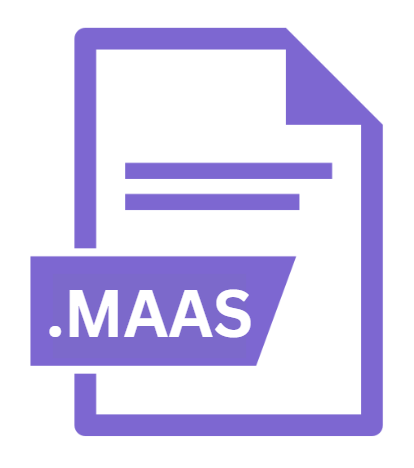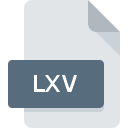.MAAS File Extension

MAAS Ransomware Encrypted File
| Developer | N/A |
| Popularity | |
| Category | Encoded Files |
| Format | .MAAS |
| Cross Platform | Update Soon |
What is an MAAS file?
In the ominous world of cyber threats, the emergence of ransomware has cast a dark shadow over digital security.
Among the plethora of ransomware variants, MAAS ransomware stands out for its distinctive file extension: .MAAS. These files, once encrypted, become inaccessible to users, holding valuable data hostage until a ransom is paid.
In this comprehensive exploration, we delve deep into the .MAAS file extension, uncovering its origins, structure, conversion methods, and the intricate dance of opening it across various operating systems.
More Information.
MAAS ransomware emerged from the shadows of the digital realm, leveraging advanced encryption algorithms to ensnare victims’ files.
Its primary purpose is extortion, aiming to coerce victims into paying a ransom in exchange for a decryption key.
The history of MAAS ransomware is intertwined with the evolution of ransomware as a whole, reflecting the continuous arms race between cybercriminals and cybersecurity professionals.
Origin Of This File.
The .MAAS file extension owes its existence to the nefarious activities of MAAS ransomware operators.
First observed, MAAS ransomware rapidly gained notoriety for its sophisticated encryption techniques and devastating impact on victims’ data.
The extension appended to encrypted files serves as a marker of the ransomware’s conquest, signaling the encryption and inaccessibility of valuable data.
File Structure Technical Specification.
The .MAAS file extension signifies files that have undergone encryption by the MAAS ransomware. Under the hood, these files undergo a transformation, rendered unreadable without the corresponding decryption key.
The encryption process typically utilizes strong cryptographic algorithms such as AES or RSA, making decryption without the key virtually impossible within a reasonable timeframe.
How to Convert the File?
Converting a .MAAS encrypted file back to its original format is a complex process due to the strong encryption employed by MAAS ransomware.
Unfortunately, legitimate means for converting .MAAS files without the decryption key provided by the attackers are scarce. Here are some steps victims can take:
- Assess the Situation: Before attempting any conversion or decryption, assess the severity of the ransomware attack. Determine if a ransom note has been left by the attackers and if there are any instructions provided for obtaining the decryption key.
- Backup Encrypted Files: As a precautionary measure, make a backup of all encrypted files. This ensures that even if decryption attempts fail, the original encrypted data is preserved for future recovery efforts.
- Contact Cybersecurity Professionals: Seek assistance from cybersecurity experts who specialize in ransomware mitigation and data recovery. These professionals may have experience dealing with MAAS ransomware attacks and can provide guidance on the best course of action.
- Explore Decryption Options: Some ransomware variants are decryptable using tools developed by cybersecurity firms or law enforcement agencies. Research available decryption tools and resources to determine if there are any viable options for decrypting .MAAS files without paying the ransom.
- Consider Paying the Ransom (with Caution): While not recommended, some victims may choose to pay the ransom as a last resort to regain access to their files. However, this approach carries significant risks, including the possibility of not receiving a working decryption key or becoming a target for future attacks.
- Stay Informed: Keep abreast of developments in the cybersecurity community regarding MAAS ransomware and any new decryption methods or tools that may become available. Information sharing and collaboration within the cybersecurity community can be valuable resources for victims seeking to recover their data.
Advantages And Disadvantages.
Advantages:
- Strong Encryption: The encryption employed by MAAS ransomware ensures that files are securely locked away from unauthorized access.
- Revenue Generation: From the perspective of cybercriminals, MAAS ransomware serves as a lucrative revenue stream, extorting payments from victims desperate to regain access to their data.
Disadvantages:
- Data Loss Risk: Victims face the risk of permanent data loss if they fail to obtain a decryption key, either due to the inability to pay the ransom or the unreliability of the decryption process.
- Ethical Concerns: The proliferation of ransomware, including MAAS, raises ethical concerns regarding the exploitation of vulnerabilities for financial gain, often at the expense of innocent individuals and organizations.
How to Open MAAS?
Open In Windows
- Utilize Antivirus Software: Use reputable antivirus software with ransomware decryption capabilities. Some antivirus vendors offer tools specifically designed to detect and decrypt files encrypted by known ransomware variants, including MAAS.
- Seek Professional Assistance: Consult cybersecurity experts or law enforcement agencies for assistance in decryption and data recovery. These professionals may have access to specialized tools and techniques for recovering files encrypted by MAAS ransomware.
Open In Linux
- Leverage Data Recovery Tools: Use Linux-compatible data recovery and decryption tools to attempt recovery of .MAAS encrypted files. Tools such as TestDisk, PhotoRec, and Scalpel are commonly used for data recovery on Linux systems.
- Engage Cybersecurity Experts: Engage cybersecurity specialists familiar with Linux environments for personalized assistance. These experts can assess the extent of the ransomware attack and recommend appropriate recovery strategies for .MAAS encrypted files on Linux systems.
Open In MAC
- Use Data Recovery Tools: Employ data recovery tools specifically designed for macOS systems. These tools can help recover deleted or encrypted files, although success may vary depending on the strength of the encryption and the integrity of the files.
- Consult Cybersecurity Specialists: Seek assistance from cybersecurity professionals experienced in macOS security and data recovery. These specialists can provide tailored guidance and support for recovering .MAAS encrypted files on macOS systems.













